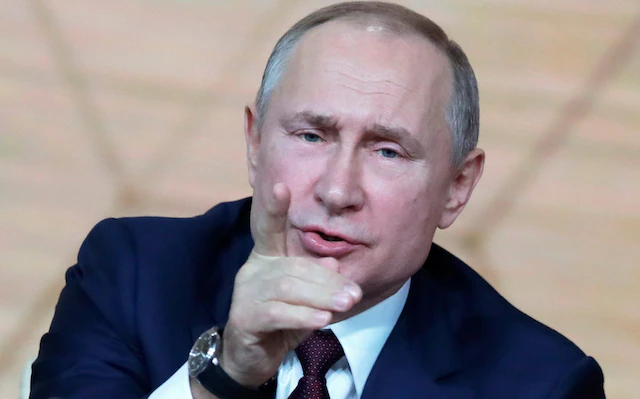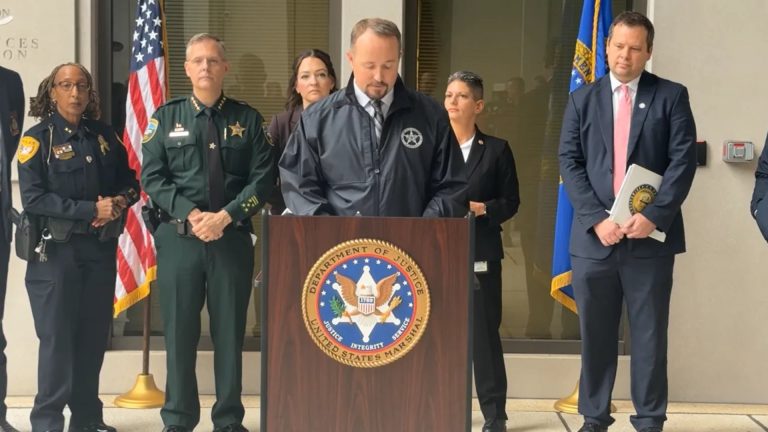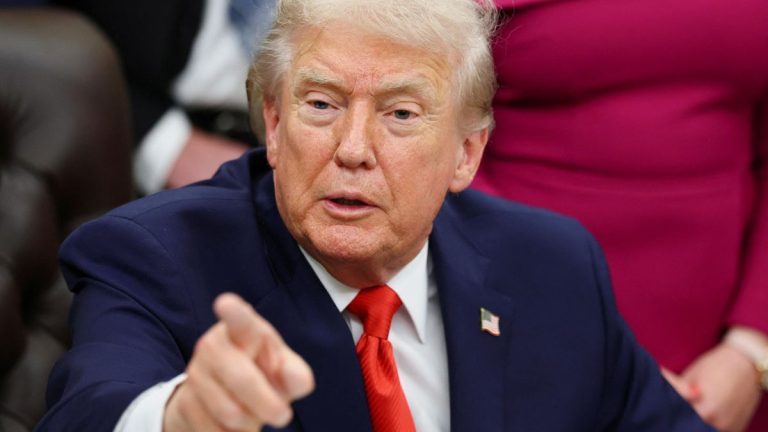The already volatile conflict between Russia and Ukraine has spilled once again into broader European territory, this time dragging Poland into the spotlight after Warsaw confirmed that its military, supported by NATO allies, shot down multiple Russian drones that entered its airspace. The incident, which Poland has described as one of the most serious provocations since the war began in February 2022, has heightened fears of a wider confrontation that could draw in NATO directly and potentially escalate toward a broader conflict.
Poland Confirms Drone Shootdowns
On September 10, Polish Prime Minister Donald Tusk addressed the public and parliament with the confirmation that Russian drones had entered Poland’s airspace over several hours. The violation, described as deliberate rather than accidental, prompted an immediate military response. Polish defense systems, with assistance from NATO coordination, engaged and destroyed the drones before they could cause damage on Polish territory.
“This was a large-scale provocation and one of the most blatant violations of our sovereignty since the war began,” Tusk stated. He emphasized that Poland acted swiftly to ensure the safety of its citizens, highlighting the necessity of NATO readiness in the face of growing Russian aggression.
According to Polish officials, the drones penetrated airspace deep enough to pose a credible threat. The scale and frequency of the intrusions led Warsaw to conclude that the actions were not isolated mistakes but instead a test of NATO’s resolve.
Russia’s Response
In Moscow, officials were quick to issue a statement defending the drone activity. The Russian Ministry of Defence claimed that the UAVs were not intended to strike targets inside Poland and that their flight range did not exceed 700 kilometers.
“The strike objectives have been achieved. All designated targets were hit. No targets on the territory of Poland were planned for striking,” the ministry said in a statement to Russian media and Sky News.
Russia further suggested that the drones may have inadvertently strayed into Polish territory while striking Ukrainian positions near the border. The ministry added that it was “ready to hold consultations with the Ministry of Defence of Poland on this matter,” a gesture that Warsaw and its allies interpreted as an attempt to downplay the seriousness of the event.
Still, the explanation has done little to calm international outrage. European leaders see the repeated violations of NATO airspace as evidence of a deliberate strategy by Moscow to test Western unity.
Historical Context: Previous Violations
This is not the first time Poland has found itself caught in the crosshairs of Russia’s ongoing war against Ukraine. Since 2022, there have been multiple incidents involving Russian missiles and drones crossing into Polish territory.
-
November 2022: A missile, believed to be part of Ukraine’s air defense effort, landed in eastern Poland, killing two people. That incident caused panic across Europe and led to emergency consultations within NATO.
-
March 2023: Poland scrambled fighter jets after a Russian missile briefly crossed into its airspace on its way to strike targets in western Ukraine.
-
August 2025: A Russian drone crashed and exploded in a Polish cornfield, which Warsaw labeled a deliberate provocation.
These earlier episodes were concerning but limited in scale. The September 2025 drone incident, however, is being described as unprecedented in both scope and intent.
European Leaders React
The response across Europe has been swift and decisive. EU foreign policy chief Kaja Kallas called the drone incident “the most serious European airspace violation by Russia since the war began.” She noted that indicators suggest the incursion was intentional, echoing Poland’s assessment that this was no accident.
“Russia’s war is escalating, not ending,” Kallas warned. “The events in Poland show us all that the Kremlin is willing to expand the theater of conflict in ways that endanger every European nation.”
Hungarian Prime Minister Viktor Orbán, often one of the more cautious voices on the war, nevertheless expressed solidarity with Poland. In a social media post, Orbán condemned the violation of Poland’s territorial integrity and argued that the incident validated Hungary’s repeated calls for peace negotiations.
“The incident proves that our policy of calling for peace in the Russia-Ukraine war is reasonable and rational. Living in the shadow of a war is fraught with risks and dangers. It’s time to make it stop! To this end, we support the efforts of President Donald Trump aimed at achieving peace,” Orbán wrote.
Romanian President Nicușor Dan was more blunt in his assessment, accusing Russia of “behaving aggressively” and “defying all our efforts to achieve peace.”
NATO’s Dilemma
The North Atlantic Treaty Organization, of which Poland has been a member since 1999, has long maintained that any attack on its members would be met with collective defense under Article 5. However, incidents like drone incursions fall into a gray area. NATO must balance between defending member states and avoiding escalation into a direct NATO-Russia war.
Military analysts note that while Poland’s defensive actions were justified, NATO is unlikely to trigger Article 5 over drones unless they cause casualties or significant damage. Instead, the alliance is expected to strengthen surveillance, deploy more anti-air defenses to the eastern flank, and increase patrols along the Polish-Ukrainian border.
“This is precisely the type of hybrid warfare Moscow uses—testing NATO’s resolve without crossing a clear red line,” said one European defense official. “The challenge is how to respond firmly without being drawn into a broader confrontation.”
Rising Fears of Escalation
For ordinary Poles and Europeans, the incident has stirred fears of a widening war. Many worry that repeated violations could one day result in a miscalculation leading to direct conflict between NATO and Russia.
Poland, already one of the strongest supporters of Ukraine’s defense, has invested heavily in its military since the war began. Its government has urged NATO to treat the incident with the seriousness it deserves, warning that Moscow is probing for weakness.
International markets also reacted nervously, with energy prices experiencing short-term spikes as investors weighed the possibility of heightened conflict in Eastern Europe.
Russia’s Strategy
Observers argue that Russia’s drone incursions into Poland are not just about hitting Ukrainian targets but also about sending a message. By demonstrating that it can project power near NATO territory, Moscow seeks to unsettle Europe and test the limits of NATO’s patience.
Some analysts believe that the Kremlin hopes to intimidate Poland and discourage further military aid to Ukraine. Poland has been a critical logistical hub for supplying Kyiv, with weapons, ammunition, and humanitarian aid flowing through its borders. Any attempt to destabilize Poland, they argue, is an attempt to weaken Ukraine’s war effort.
Looking Ahead
The drone incident has added new urgency to ongoing diplomatic efforts. President Donald Trump, who has been vocal about pursuing a peace deal between Russia and Ukraine, faces renewed pressure to accelerate talks. European leaders are divided between those advocating stronger military deterrence and those calling for negotiations to prevent further escalation.
For Poland, the message is clear: it will not tolerate violations of its sovereignty. Prime Minister Tusk has promised that Warsaw will continue to defend its skies with determination, warning Moscow that any further provocations will be met with decisive action.
As Europe grapples with the consequences of this latest crisis, one reality becomes ever clearer: the war in Ukraine is no longer confined to Ukraine. Its tremors are being felt across borders, pulling NATO into increasingly dangerous waters. Whether this incident becomes a turning point or just another episode in a grinding war remains to be seen—but the risks of miscalculation are higher than ever.

James Jenkins is a celebrated Pulitzer Prize-winning author whose work has reshaped the way readers think about social justice and human rights in America. Raised in Atlanta, Georgia, James grew up in a community that instilled in him both resilience and a strong sense of responsibility toward others. After studying political science and creative writing at Howard University, he worked as a journalist covering civil rights issues before dedicating himself fully to fiction. His novels are known for their sharp, empathetic portraits of marginalized communities and for weaving personal stories with broader political realities. Jenkins’s breakout novel, Shadows of Freedom, won national acclaim for its unflinching look at systemic inequality, while his more recent works explore themes of identity, resilience, and the fight for dignity in the face of oppression. Beyond his novels, James is an active public speaker, lecturing at universities and participating in nonprofit initiatives that support literacy and community empowerment. He believes that storytelling is a way to preserve history and inspire change. When not writing, James enjoys jazz music, mentoring young writers, and traveling with his family to explore cultures and stories around the world.









